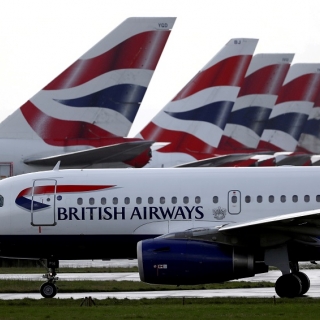


GBP/USD depreciates after two consecutive sessions of gains, trading around 1.2660 during Asian hours on Thursday. The pair loses ground as the US Dollar (USD) strengthens amid increased risk aversion and rising US Treasury yields.
Federal Reserve Bank of Atlanta President Raphael Bostic stated late Wednesday that the Fed should maintain current interest rates to continue applying downward pressure on inflation, according to Bloomberg. Bostic noted the need for more data to determine if January's inflation was a temporary bump or the start of a trend. He emphasized that Fed policy remains restrictive and should stay that way.
The US Dollar Index (DXY), which measures the USD against six major currencies, advanced near 106.50, with 2-year and 10-year US Treasury bond yields standing at 4.08% and 4.27%, respectively, at the time of writing.
US Commerce Secretary Howard Lutnick announced late Wednesday that April 3 would serve as the baseline for reciprocal tariff data. He also stated that Chinese vehicles would not be allowed in the US, citing China as a major concern. Separately, US Treasury Secretary Scott Bessent reaffirmed his commitment to working with Congress to make President Trump's tax cuts permanent.
Bank of England (BoE) Monetary Policy Committee Member Swati Dhingra commented on Wednesday that higher US tariffs could strengthen the US Dollar in the short term, leading to some price-increasing effects in the United Kingdom (UK). However, she noted that the overall inflationary impact in the UK would likely be offset by reduced global price pressures resulting from these tariffs.
The single most important factor influencing the value of the Pound Sterling is monetary policy decided by the Bank of England. The BoE bases its decisions on whether it has achieved its primary goal of "price stability" – a steady inflation rate of around 2%. Its primary tool for achieving this is the adjustment of interest rates. When inflation is too high, the BoE will try to rein it in by raising interest rates, making it more expensive for people and businesses to access credit. This is generally positive for GBP, as higher interest rates make the UK a more attractive place for global investors to park their money. When inflation falls too low it is a sign economic growth is slowing. In this scenario, the BoE will consider lowering interest rates to cheapen credit so businesses will borrow more to invest in growth-generating projects.
Source: Fxstreet
The British Pound (GBP) advances sharply against the US Dollar (USD) on Wednesday, with GBP/USD climbing to a one-week high, reaching its strongest level since September 24, as the Greenback remains u...
GBP/USD caught a slight lift on Tuesday, creeping into the 1.3450 region and tilting into a third straight bullish session. United Kingdom (UK) Gross Domestic Product (GDP) growth figures beat expecta...
The British Pound (GBP) gains traction against the US Dollar (USD) on Friday, with GBP/USD snapping a two-day losing streak. At the time of writing, the pair is hovering near 1.3393, staging a modest ...
The British pound held above $1.363, close to its highest in over ten weeks, as traders awaited key central bank decisions. The Bank of England is expected to leave rates at 4% on Thursday while slowi...
Pound Sterling (GBP) gained modestly against the dollar but underperformed the euro as stagnant productivity, soft labor demand, and sticky wage growth underscore the UK's stagflation risk, BBH FX ana...
US President Donald Trump hit markets with a fresh tariff threat on Friday, continuing his lashout at China over their decision to impose even stricter export licensing requirements on foreign entities trying to move critical rare earths minerals...
Gold price rises during the North American session on Friday amid an escalation of the trade war between the US and China. This, the US government shutdown and expectation for further easing by the Federal Reserve (Fed) keep the yellow metal bid....
The Dow Jones Industrial Average (DJIA) soured sharply on Friday, plummeting to its lowest bids in nearly three weeks and declining over 1,000 points top-to-bottom after US President Donald Trump pulled out of upcoming trade talks with Chinese...
 European stocks held steady on Thursday after hitting new records the previous day, as investors awaited the latest news on the French political...
European stocks held steady on Thursday after hitting new records the previous day, as investors awaited the latest news on the French political...
 US stocks pulled back on Thursday as investors paused to digest optimism around AI, interest-rate cuts, and the ongoing government shutdown. The...
US stocks pulled back on Thursday as investors paused to digest optimism around AI, interest-rate cuts, and the ongoing government shutdown. The...
 The S&P 500 and Nasdaq Composite reached new heights on Thursday as the market's march higher carries on.
The broad market index hovered around...
The S&P 500 and Nasdaq Composite reached new heights on Thursday as the market's march higher carries on.
The broad market index hovered around...
 President Donald Trump announced steep tariffs on imported lumber and wood products, which his administration says are necessary to protect the US...
President Donald Trump announced steep tariffs on imported lumber and wood products, which his administration says are necessary to protect the US...